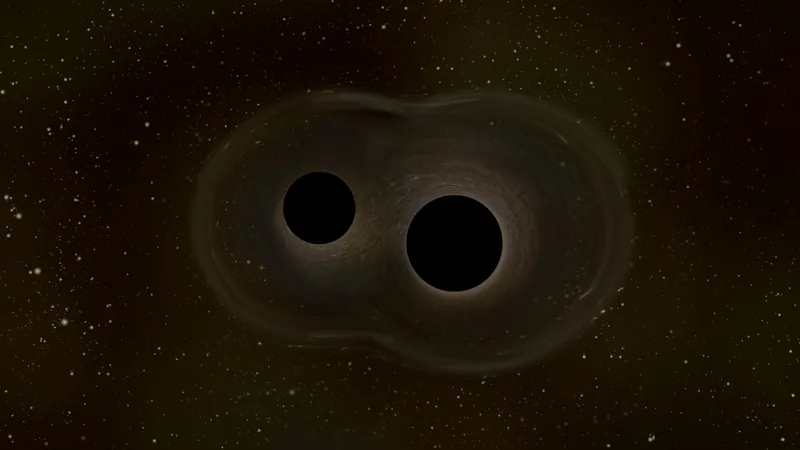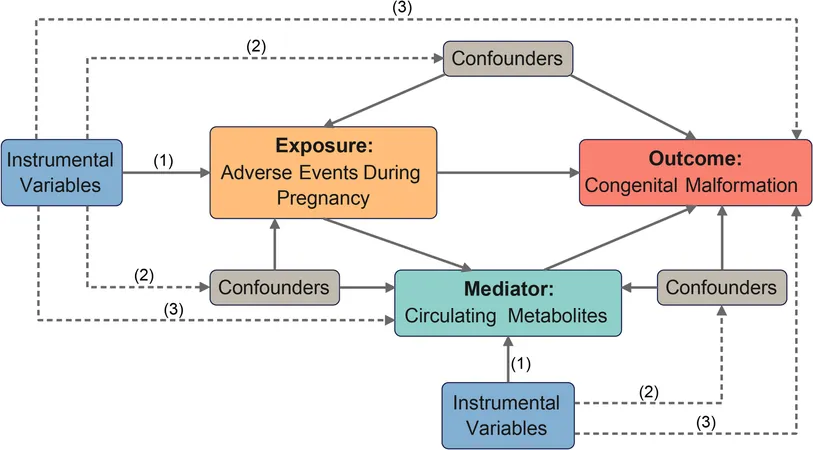
Black Hole Mergers: A New Hope for Solving the Hubble Tension? Not Quite.
2025-08-25
Author: Sophie
The Hubble Tension: A Cosmic Conundrum
For years, astronomers have grappled with the perplexing "Hubble tension"—a puzzling disparity in measurements of the universe's expansion rate. While black hole mergers were once considered a potential key to unlocking this mystery, recent findings suggest that this theory may not hold water.
Tangled Measurements and Deepening Discrepancies
In 2022, scientists detected a startling inconsistency in the Hubble constant, which gauges the universe's current expansion. Measurements based on the early universe, such as data from the cosmic microwave background, report significantly lower values than those observed in today's universe.
As researchers continue to investigate, this gap has only widened, leaving cosmologists scouring the cosmos for solutions.
Disappearing Matter? Theories and Hypotheses
Traditional cosmological models operate under the assumption that the universe's matter remains constant. Thus, to mend the Hubble tension, some propose that mass might be vanishing altogether. One wild idea posits that dark matter could decay into an undetectable form of radiation. However, the true nature of dark matter remains a mystery, leaving these theories largely speculative.
Black Holes: Nature's Matter Destroyers?
When it comes to obliterating matter, black holes are a known player. While black holes themselves trap matter, their mergers unleash massive amounts of energy as gravitational waves, effectively erasing the mass that generated them. Such mergers can release energy equivalent to several suns.
Testing the Theory
Intrigued by this connection, a talented team of astrophysicists from Vanderbilt University dove into research to explore whether black hole mergers could bridge the gap in the Hubble tension.
Their findings revealed a shocking conclusion: to account for the disparity, black holes would need to merge at a rate far from plausible. When they calculated the real merger rates based on the life cycles of massive stars and their black hole progeny, they found that actual mergers occur about 10,000 times less frequently than required to explain the Hubble tension.
Looking Ahead: The Pursuit of Cosmic Clarity
Though these findings have yet to undergo peer review, they mark a critical step in the quest to understand the Hubble tension. As scientists continue to investigate this cosmic mystery, they embody the role of cosmic detectives, unearthing every possible solution. Only through tireless exploration and scrutiny will answers to the universe's most confounding questions eventually emerge.









 Brasil (PT)
Brasil (PT)
 Canada (EN)
Canada (EN)
 Chile (ES)
Chile (ES)
 Česko (CS)
Česko (CS)
 대한민국 (KO)
대한민국 (KO)
 España (ES)
España (ES)
 France (FR)
France (FR)
 Hong Kong (EN)
Hong Kong (EN)
 Italia (IT)
Italia (IT)
 日本 (JA)
日本 (JA)
 Magyarország (HU)
Magyarország (HU)
 Norge (NO)
Norge (NO)
 Polska (PL)
Polska (PL)
 Schweiz (DE)
Schweiz (DE)
 Singapore (EN)
Singapore (EN)
 Sverige (SV)
Sverige (SV)
 Suomi (FI)
Suomi (FI)
 Türkiye (TR)
Türkiye (TR)
 الإمارات العربية المتحدة (AR)
الإمارات العربية المتحدة (AR)